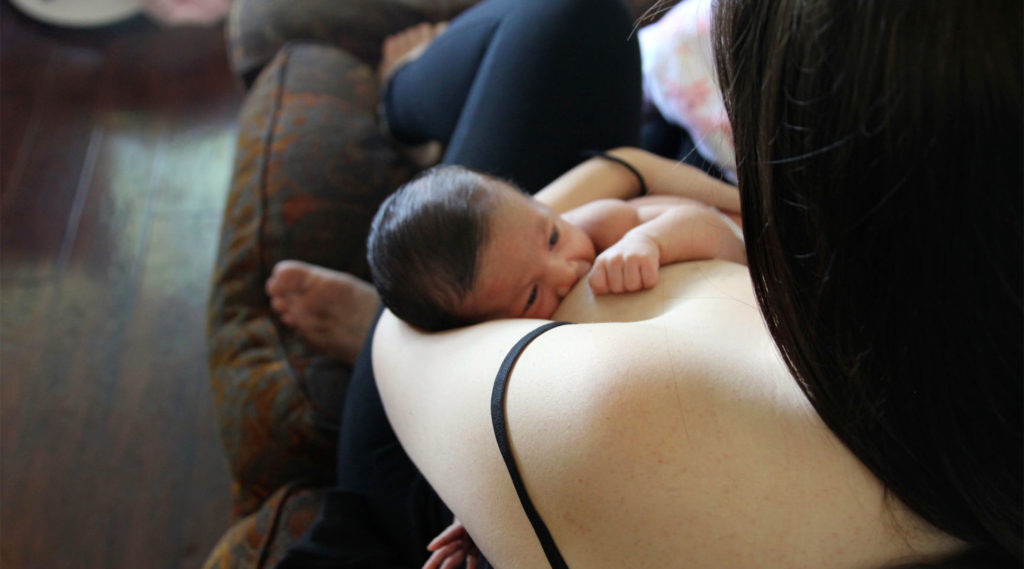How Many Calories Do You Burn When Giving Birth? Scientific Breakthrough
Giving birth is undoubtedly one of the most awe-inspiring experiences a woman can go through. Beyond the joy and wonder that comes with bringing a new life into the world, this miraculous journey also demands immense physical exertion. From the moment contractions begin to the final push, a mother’s body endures an incredible transformation, expending energy in ways few other activities can rival.
But have you ever wondered just how many calories you burn while giving birth? As we delve into this question, prepare to be amazed by the extraordinary effort it takes to welcome a baby into our lives.
The calorie burned during childbirth varies widely but can range from approximately 500 to 3,000 calories. Factors like the length of labor, delivery method, and individual metabolic rates contribute to the total caloric expenditure. It’s important to consult with healthcare professionals for personalized information.
Estimating Calories Burned During Childbirth

Estimating the number of calories burned during childbirth is a complex task, as it involves a variety of factors including the duration of labor, type of delivery, and individual metabolic rate. However, there are some general guidelines to provide a rough estimate.
Duration of Labor:
The longer the labor, the more energy is expended. Active labor can last for several hours and involves intense muscular effort, particularly during contractions. The body is effectively doing an intense workout during this period.
Type of Delivery:
A vaginal delivery generally involves more physical effort and therefore may burn more calories than a C-section, where surgical intervention does the majority of the work. However, the body also expends energy during the healing process following a C-section, although it’s difficult to quantify exactly how much.
Individual Metabolic Rate:
Every person’s body burns energy at a different rate, depending on factors like age, weight, and overall health. This means that two people could expend a different number of calories during childbirth even if all other factors are similar.
General Estimates:
Based on these considerations, some experts estimate that the caloric expenditure during childbirth can range between 500 to 3,000 calories. For context, running a marathon can burn approximately 2,600 calories for a 155-pound person, making childbirth comparably energy-intensive for many.
Caveats:
It’s important to note that these are approximate figures and individual experiences can vary widely. Additionally, the stress and emotional factors involved in childbirth also consume energy, although they are more difficult to quantify.
Postpartum Calorie Burning: The Aftermath of Birth
The process of childbirth may be a monumental event, but it’s only the beginning of a new chapter in metabolic and physical demands for the new parent. The postpartum period, the weeks and months following childbirth, is a critical time for recovery, healing, and caring for the newborn. All of these activities require energy and, therefore, calorie expenditure. Here’s a look at some aspects where calories continue to be burned in the postpartum period.
Breastfeeding:
Breastfeeding is one of the most energy-intensive activities post-birth. Producing breast milk can burn between 300 to 500 calories per day, depending on factors like the frequency of feeding, milk supply, and the baby’s needs.
Recovery and Healing:
Whether you’ve had a vaginal birth or a C-section, your body is in a state of recovery, repairing tissues and restoring normal function. The healing process itself requires energy, although it’s difficult to quantify the exact caloric burn.
Physical Activities:
New parents often find themselves in constant motion—picking up the baby, rocking them to sleep, walking around to soothe them, etc. These activities, while seemingly mundane, do add up in terms of calorie burn.
Emotional and Psychological Demands:
Although harder to measure, the emotional and psychological aspects of becoming a new parent also require energy. Stress and sleep deprivation, common during the postpartum period, may influence your metabolic rate, sometimes causing it to increase as your body tries to cope.
Hormonal Changes:
Your body is undergoing significant hormonal shifts post-birth, especially if you’re breastfeeding. These hormonal changes can also affect your metabolic rate, although this is complex and not fully understood.
Impact of different birth methods on calorie burn
Giving birth is often described as an intense and physically demanding experience. It naturally raises questions about the impact of different birth methods on calorie burn. Traditional vaginal deliveries, commonly referred to as natural births, require significant effort from the mother’s muscles during labor contractions. This strenuous activity can consume a vast amount of calories and lead to a noticeable decrease in body weight postpartum. On the other hand, cesarean sections (C-sections) involve surgery and do not require the same level of physical exertion, hence burning fewer calories compared to vaginal deliveries.
Interestingly, research has shown that breastfeeding, which is equally possible regardless of the birth method chosen, stimulates calorie burn in new mothers regardless of how they delivered their baby. The act of producing breast milk itself burns additional calories by using up energy that would otherwise have been stored as fat reserves in the body. These findings challenge the assumption that women who have C-sections may struggle more with weight loss post-birth compared to those who gave birth vaginally.
However, it’s essential to consider that individual factors such as metabolism and lifestyle choices also influence calorie burn after childbirth. While one mother may experience substantial weight loss after a natural birth due to increased physical exertion during labor and breastfeeding afterward, another mother with different genetics or dietary habits might face greater challenges in shedding pounds from her pregnancy weight regardless of how she delivered her baby.
Final Thoughts
In conclusion, giving birth is a physically demanding process that requires considerable energy expenditure. While it is difficult to determine the exact number of calories burned during childbirth due to various factors, research suggests that it can range from 500 to 3,000 calories. This calorie burn can be attributed to the physical exertion involved in labor and delivery, as well as the body’s effort to recover postpartum.
It is important for women to nourish their bodies with healthy and nutritious foods during this time to support their recovery and meet their increased energy needs. Additionally, incorporating regular exercise and maintaining a balanced lifestyle can help women regain their strength and fitness levels after giving birth.
FAQs
Does the number of calories burned vary depending on the type of delivery?
Yes, the number of calories burned can vary based on factors such as the duration of labor and whether it is a vaginal or cesarean delivery.
Are there any specific exercises that can help with calorie-burning postpartum?
Engaging in low-impact exercises like walking or swimming can help increase calorie expenditure after giving birth. However, always consult with your healthcare provider before starting any exercise regimen postpartum.
Do all women burn the same number of calories during childbirth?
No, each woman’s metabolism and individual circumstances can affect the number of calories burned during childbirth.







